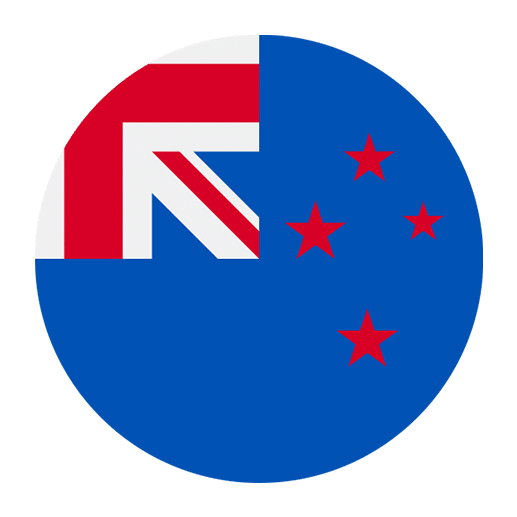The resurgence of indigenous languages around the world marks a profound cultural renaissance, and the Māori language, or Te Reo Māori, is no exception. With its rich oral traditions, poetic expressions, and deep connection to the land and people of New Zealand, Te Reo Māori is a treasure trove of cultural heritage. One innovative and engaging way to support the learning and revitalization of Māori language is through art and craft. This article explores how integrating art and craft into language learning can enhance understanding, appreciation, and use of Te Reo Māori.
The Cultural Significance of Māori Art and Craft
Māori art and craft are more than just aesthetic expressions; they are imbued with profound cultural, spiritual, and historical significance. Traditional Māori art forms include carving (whakairo), weaving (raranga), tattooing (ta moko), and painting (kōwhaiwhai). Each of these art forms tells stories, conveys values, and preserves history, making them powerful tools for language learning.
For instance, whakairo, the intricate carvings found in meeting houses (wharenui) and on canoes (waka), often depict ancestral figures and mythological stories. These carvings are typically accompanied by narratives (pūrākau) that are rich in Te Reo Māori vocabulary and expressions. Similarly, ta moko, the traditional tattoo art, is a visual language that tells of an individual’s genealogy, social status, and personal achievements.
Connecting Language and Culture Through Art
One of the primary benefits of using art and craft in language learning is that it provides a tangible connection to the culture from which the language originates. When learners engage in Māori art and craft, they are not only practicing language skills but also immersing themselves in the cultural context that gives the language its meaning.
For example, when learning about raranga (weaving), students can be introduced to the specific vocabulary associated with the craft, such as “whenu” (weaving strips), “raranga” (to weave), and “whiri” (to plait). As they learn the techniques and create their own woven items, they can practice using these terms in context, reinforcing their understanding and retention of the language.
Practical Activities to Support Māori Language Learning
To effectively integrate art and craft into Māori language learning, educators and learners can engage in a variety of activities that combine hands-on creativity with language practice. Here are some practical ideas:
1. Whakairo (Carving) Workshops
Organize carving workshops where participants can learn the basics of whakairo. Provide tools and materials for learners to create their own small carvings, such as pendants or small panels. During the workshop, introduce and use relevant Māori vocabulary and phrases. Encourage participants to describe their designs, the meanings behind them, and the techniques they are using in Te Reo Māori.
Example Activity:
Participants can carve a simple motif, such as a koru (spiral), which symbolizes new life and growth. As they work on their carvings, they can learn and use words like “pou” (post), “whakairo” (carving), and “tohu” (symbol).
2. Raranga (Weaving) Sessions
Host weaving sessions where learners can create items such as kete (baskets), whāriki (mats), or piupiu (skirts). Provide instruction in Te Reo Māori and encourage participants to converse in the language as they work. Use traditional patterns and designs as a basis for discussing cultural significance and related vocabulary.
Example Activity:
Create a small kete using harakeke (flax). Teach and practice vocabulary like “harakeke” (flax), “kete” (basket), “tapahi” (cut), and “whiri” (plait). Discuss the cultural importance of harakeke and its uses in Māori society.
3. Kōwhaiwhai (Painting) Projects
Involve learners in painting projects that incorporate traditional kōwhaiwhai patterns, which are often found on the rafters of wharenui. These patterns have symbolic meanings and can be used to teach vocabulary related to nature, family, and spirituality. Encourage learners to describe their artwork and the stories behind the patterns in Te Reo Māori.
Example Activity:
Paint a mural featuring kōwhaiwhai patterns. Introduce terms such as “kōwhaiwhai” (painted scroll ornamentation), “wharenui” (meeting house), and “tā” (to draw/paint). Have learners explain the significance of their chosen patterns and colors in Māori.
4. Ta Moko (Tattoo) Exploration
While traditional tattooing may not be feasible in a classroom setting, learners can explore the art of ta moko through drawing or temporary tattoos. Discuss the meanings behind different moko designs and the cultural significance of ta moko in Māori society. Use this as an opportunity to teach vocabulary related to body parts, design elements, and personal identity.
Example Activity:
Create temporary moko designs using markers or face paint. Teach terms such as “moko” (tattoo), “kanohi” (face), “ringa” (arm), and “whakapapa” (genealogy). Discuss how ta moko reflects an individual’s identity and heritage.
Incorporating Storytelling and Oral Traditions
Māori culture has a strong oral tradition, with storytelling (pūrākau) playing a central role in passing down knowledge and values. Integrating storytelling into art and craft activities can further enrich the language learning experience.
1. Pūrākau and Whakairo
When engaging in carving activities, introduce learners to pūrākau associated with the designs they are creating. For example, if carving a figure of Māui, the legendary demigod, share stories about his exploits and discuss the vocabulary and expressions used in the tales.
Example Activity:
As learners carve a representation of Māui, share the story of how he fished up the North Island. Teach and practice words like “kaimoana” (seafood), “ika” (fish), and “matau” (hook). Encourage learners to retell the story in their own words in Te Reo Māori.
2. Raranga and Whakataukī (Proverbs)
Incorporate whakataukī (proverbs) into weaving sessions. Many Māori proverbs are tied to the natural world and traditional practices, making them relevant to the craft of weaving. Discuss the meanings of these proverbs and how they relate to the weaving process and Māori values.
Example Activity:
While weaving a whāriki (mat), introduce the proverb “He muka nō te taura whiri” (A strand of the woven rope). Explain how this proverb relates to the strength of unity and the process of weaving. Teach and practice related vocabulary such as “muka” (flax fiber) and “taura” (rope).
3. Kōwhaiwhai and Waiata (Songs)
Pair painting projects with waiata (songs) that feature kōwhaiwhai patterns or themes. Singing together can enhance language retention and create a communal learning experience. Discuss the lyrics of the waiata and how they connect to the artwork being created.
Example Activity:
As learners paint kōwhaiwhai patterns, teach a waiata that references nature or traditional designs. Practice vocabulary from the song and encourage learners to sing along while working on their paintings.
The Role of Community and Collaboration
Supporting Māori language through art and craft is not just an individual endeavor; it is a community effort. Engaging with the broader Māori community and collaborating with native speakers, artists, and cultural experts can greatly enhance the learning experience.
1. Collaborating with Māori Artists
Invite Māori artists to lead workshops and share their expertise. This provides learners with authentic insights into traditional techniques and cultural practices. It also offers an opportunity for learners to hear and practice Te Reo Māori in a natural context.
Example Activity:
Host a carving workshop led by a Māori master carver. Have the artist explain the significance of different designs and demonstrate techniques while speaking in Te Reo Māori. Encourage learners to ask questions and interact in the language.
2. Participating in Community Events
Attend community events such as kapa haka (Māori performing arts) festivals, art exhibitions, and cultural workshops. These events provide immersive experiences where learners can hear and use Te Reo Māori in various contexts, from performances to casual conversations.
Example Activity:
Organize a group visit to a kapa haka festival. Before the event, teach vocabulary related to performing arts, such as “haka” (traditional dance), “waiata” (song), and “poi” (ball dance). Encourage learners to engage with performers and other attendees in Te Reo Māori.
3. Creating a Supportive Learning Environment
Foster a supportive and inclusive learning environment where learners feel encouraged to experiment with the language and express themselves through art and craft. Provide positive feedback and celebrate the cultural and linguistic achievements of each participant.
Example Activity:
Hold a showcase event where learners can display their art and craft projects and share the stories behind them in Te Reo Māori. Invite community members, family, and friends to attend and support the learners’ efforts.
Conclusion
Supporting the Māori language through art and craft is a multifaceted approach that combines linguistic, cultural, and creative elements. By engaging in traditional Māori art forms, learners can deepen their understanding of Te Reo Māori and its cultural context, making language learning a more meaningful and enjoyable experience. Whether through carving, weaving, painting, or storytelling, integrating art and craft into language education can help preserve and revitalize the Māori language for future generations. Embrace the beauty and richness of Māori culture and language, and let creativity be your guide on this rewarding journey.

